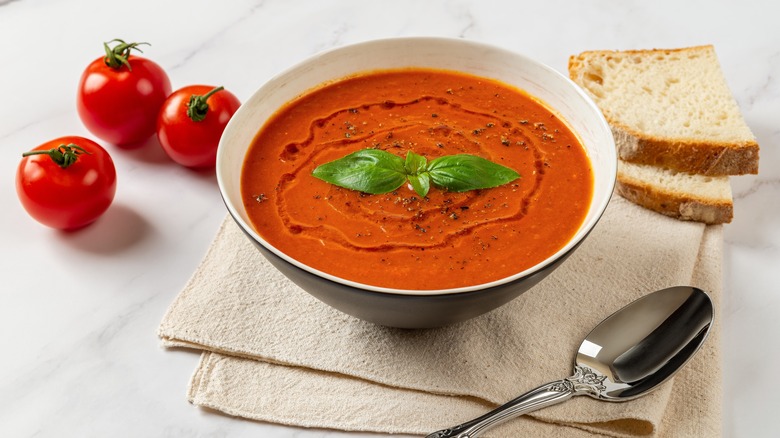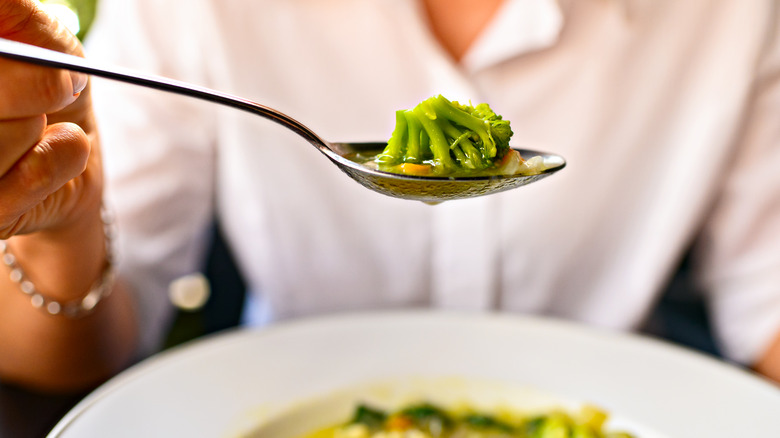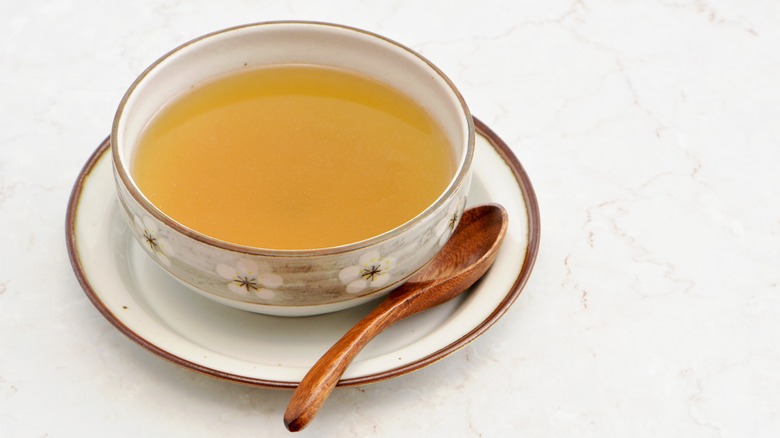The Historical Soup Etiquette We Still Follow Today
Although many restaurant etiquette rules should be rewritten to reflect current social norms, many of the ones set in place decades (if not centuries) ago are still applicable today. One such rule concerns the way we use a spoon to eat soup, with its reasoning tied up in centuries of utensil evolution and cultural tradition.
According to age-old custom, the best way to eat soup is by dipping it away from yourself, then scooping it back up and away. While the movement may seem a bit awkward, scooping away prevents the soupy side of the spoon from dripping on the table and your clothes. This method also allows for easier scraping of the spoon's underside against the rim of the bowl before you raise it to your mouth, further reducing the risk of a mess.
If that wasn't enough rationale for this age-old practice, scooping soup away from yourself allows the side nearest to you to stay cool. As you raise the spoon to your mouth, the soup can cool down sufficiently enough to not burn your tongue.
The evolution of soup spoons
In looking at how this particular bit of soup eating etiquette came to be, we have to start at the very beginning. Spoons date all the way back to the ancient Egyptians, if not earlier, with often large varieties used to eat soup. Over the course of centuries, the utensil diversified alongside bowls, with soups and stews earning their own special silverware by the 18th century. Things like coffee, salt, and mustard also had designated tools to scoop them up. During this time, spoon handles were also longer and commonly decorated with engravings of leaves, beading, and clean lines, resulting in agelessly elegant designs.
Of course, because ancient spoons were much larger than the ones we see today, it was all but a necessity to sip from one side of it rather than attempt to shove the entire utensil in your mouth. Though soup spoons were redesigned to be smaller and rounder during the 19th century, the preferred method of sipping remained. It's really not such a bad thing, as the practice better allows you to savor soup as you eat. No need to rush, right?
Further etiquette for enjoying a bowl of soup
Another important piece of soup etiquette concerns the controversial slurp. While slurping is part of proper etiquette in Japan, this noise is considered impolite and distasteful in much of American culture. Fortunately, we can ward off any noises by addressing the main root of the problem: soup being too hot.
The preferred way to cool it is by using the aforementioned method of scooping, or by holding the spoon just over the bowl until it cools enough to eat. Etiquette experts actually discourage blowing onto soup to cool it, as it gives the impression of impatience, and could cause the bowl's contents to splatter. Instead, quietly sip soup to avoid offending your dinner companions.
As for resting your spoon, place it on the plate often served beneath the bowl whenever you're not actively using the utensil. This will prevent accidental tipping or dropping; your waiter also doesn't want to tip the bowl or drop the spoon when they clear the table. And it allows the waiter to stack bowls quickly. If you aren't provided a plate underneath your bowl, only then should you rest your spoon inside the bowl when you're finished eating; in all cases, definitely do not place it on the table.



